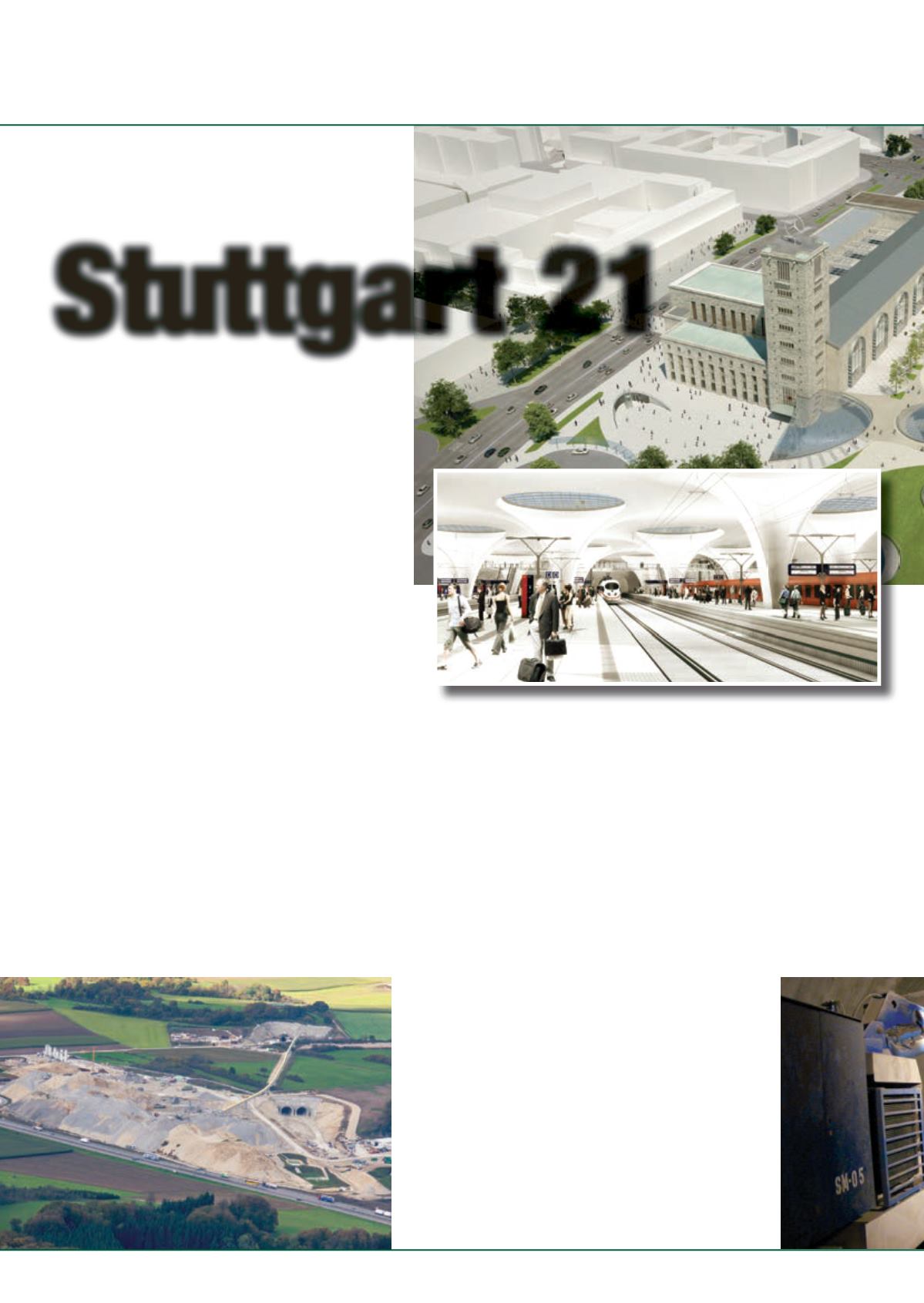
international
construction
december 2014
SITEREPORT
14
some 100Ha of land in the city centre currently takenup by rail
lines and yards.This opens uppossibilities of urban regeneration,
better trafficmanagement and the development of amore viable
andenvironmentally friendlycitycentre, all ofwhichareelements
of the Stuttgart 21 scheme.
In terms of rail infrastructure, in addition to the intercity
elements of the project, new urban links will be built to connect
Stuttgart’s airport and exhibition ground complex to the city
centre.Two further new stationswill be builtwithin the city on a
rail loopwith the central station.
The restructuring of the city’s rail network will entail a total of
57 km of new lines being built, with some 33 km in tunnels.
Therewill be16 individual tunnels and cuttings, andothermajor
structures include 18bridges.
Constructionbegan inFebruary2010, with an initial budget of
€4.5billion (US$5.6billion) for the Stuttgart 21 element of the
project. Adding in the high-speed rail elements outside the city
take the costs to € 9.5 billion (US$ 11.9 billion) for the whole
scheme.
Costs for Stuttgart 21have since risen to€6.5billion (US$8.2
billion),whichwill bemetbyDeutscheBahn (58%), theGerman
federal government (19%), the state of Baden-Württemberg
(14%), the city of Stuttgart (4%) Stuttgart Airport (3%) and the
Greater Stuttgart Region (2%).
Of course tunnelling in an urban environment is a delicate
business. The ARGE Tunnel Cannstatt consortium, which
comprises Hochtief, Alpine Bau andWayss & Freytag opted for
I
n broad terms, the plan to extend south western Germany’s
high-speed rail link sounds simple. A line fromMannheim
to Stuttgart was completed in 1991, and the idea now is to
push a further 90kmor so southeast toUlm.Of course threading
new high speed lines into such big urban centres – Stuttgart has
more than600,000 inhabitants andUlm some125,000– isnever
easy, but the complications in Stuttgart make this an incredibly
complex constructionproject.
The overarching project for Stuttgart is called Stuttgart 21,
referencing the 2021 completion date, and it encompasses a lot
more than just the high-speed rail link. One of the biggest issues
in thecity is that themain station is currentlya terminus,with the
lines facing in completely the wrong direction. Trains currently
leave in a north-easterly direction, so not only does the station
need to be converted to a through facility, but the tracks need to
realignedby90° to facewest towardsMannheim and east toUlm.
In order to preserve the historic main station building and
redevelop the city centre, which is dividedby the train tracks, the
new stationwill be built undergroundwith eight through tracks.
According to the project owner, Bahnprojekt Stuttgart-Ulm,
which is jointlyheldby theEuropeanUnion, theGermanFederal
government,German state rail companyDeutscheBahn, the city
of Stuttgart, the greater Stuttgart region and the state of Baden-
Wüttemberg, taking the main station underground will free up
Amajor project to improve high-speed rail
connectivity in southwesternGermany
involves re-engineeringStuttgart’s
urban rail layout with a vast array of new
tunnels.
Chris Sleight
reports.
Stuttgart 21
The new underground stationwill allow
the original structure to be retained, while
‘lighting cones’ will allow in natural light.
Portal of the new 4.8 km Steinbühltunnel, one of fivemajor
tunnels totalling 30.4 km on the new stretch of high-speed
line between Stuttgart and Ulm.
Stuttgart 21


